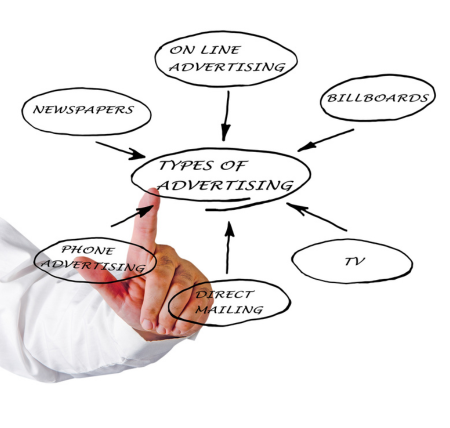Marketing in the News
Marketing in the news generally refers to how brands use different marketing strategies to promote their products and services through news media channels, like online news outlets, television, media, newspapers, and magazines.

These specific marketing strategies include advertising, public relations, content marketing, influencer marketing, and other tactics. Marketing through news media channels can be a potent tool for companies to attain a vast audience and establish brand recognition. Moreover, companies must exercise caution while employing these strategies, as consumers tend to be wary of obvious marketing ploys and may perceive them as dishonest or manipulative.
Contents
Different forms of marketing in the news
Marketing in the news is a crucial strategy for brands seeking to build brand awareness and reach a vast audience. This can involve a range of tactics, from traditional advertising to digital marketing, such as influencer marketing and content marketing. Now we'll take a closer look at some of the different types of marketing in the news and how they can be used effectively.
- Advertising
Advertising is considered the most traditional form of marketing in the news and includes everything from print ads in magazines and newspapers to television and radio commercials. It is a powerful way for companies to reach a broad audience and promote their products and services.
Remember that advertising can also be expensive and may not be the most effective way to reach specific demographics in the same manner digital marketing is. Plus, some consumers are often skeptical of overt advertising and may be more likely to trust other forms of marketing.
Traditional ad spending budget can vary depending on many factors, such as the size of the brand, its industry, or the marketing objectives it needs to achieve, and even depending on the category: print advertising, television advertising, radio advertising, and outdoor advertising.

- Public Relations
PR is sometimes used to gain credibility and trust with consumers because it involves third-party validation of products, brands, or companies. When it comes to promoting brands and companies, PR (Public relations) consists in using media coverage, including press releases, pitching stories to the media, and scheduling interviews with journalists.
However, PR can be challenging to control, as the media may not always portray a company how it wants to be portrayed. Remember that PR may not be as effective as other forms of marketing in reaching a large audience.
- Content Marketing
Content marketing is often used to establish a company as a thought leader in its industry and build consumer trust.
Content marketing refers to creating and sharing valuable content to reach and retain a target audience, like blog posts, videos, infographics, and other types of content specific to social media platforms.
Nevertheless, keep in mind that content marketing can be time-consuming and may not provide immediate results. In addition, it can take time to create valuable and engaging content for consumers.
- Influencer Marketing
Influencer marketing is often used to reach younger audiences and build buzz around a product or service. It involves strategic partnerships with influencers, or individuals with large social media followings, to promote a company or product.
Influencers can be social media personalities, celebrities, and bloggers.
As a minus, influencer marketing is more expensive than other forms of marketing in the news and may only be ineffective if a brand chooses the right influencer. Moreover, consumers may view influencer marketing as inauthentic or insincere.
- Native Advertising
Native advertising is often used to reach consumers skeptical of traditional advertising. This type of advertising involves creating sponsored content alongside other editorial content in a publication or website.
Native ads are designed to blend in with the surrounding content and provide value to readers.
However, native advertising can be difficult to distinguish from editorial content, misleading consumers. In addition, native ads may not be as effective as other forms of marketing in generating immediate results.
Traditional advertising vs. Digital advertising
Traditional advertising refers to promotional methods used for many years, such as print ads, television and radio commercials, billboards, and direct mail. These forms of advertising typically involve a one-way communication from the advertiser to the audience, and they are often targeted at a broad audience rather than a specific demographic or individual.
Digital advertising, on the other hand, refers to promotional methods that are delivered through digital channels, such as the Internet, social media, mobile devices, and email. In addition, digital advertising often allows for more precise targeting and measurement than traditional advertising, as it can be tailored to specific audiences based on age, gender, location, and interests.

Examples of digital advertising include search engine marketing (SEM), pay-per-click (PPC) advertising, display ads, video ads, social media ads, and influencer marketing. These forms of advertising often allow for greater flexibility, interactivity, and engagement than traditional advertising, as they can be customized to the individual user and include interactive elements such as surveys or quizzes.
Both traditional and digital advertising have their strengths and weaknesses, and the most effective marketing strategy will often involve a combination of both. For example, traditional advertising can effectively build brand awareness and reach a broad audience. In contrast, digital advertising can be more precise and targeted, allowing for more effective customer engagement and lead generation. Ultimately, the best approach will depend on the specific goals, audience, and resources.
Marketing in the news - how can brands explore this domain to their advantage
Marketing in the news has evolved rapidly with the rise of digital marketing. With the advent of online news outlets, social media marketing, and email newsletters, companies can now reach audiences in more ways than ever. As a result, the marketing news landscape is constantly evolving, with new strategies and techniques always emerging.
Many marketing news outlets cover personal finance. By providing content that helps customers make informed decisions about their finances, companies can build stronger customer relationships and establish themselves as trusted advisors. Newsletters are popular ways to deliver this content directly to customers. By signing up for a newsletter, customers agree to receive updates on topics that interest them. In addition, they can unsubscribe at any time.
Digital brands have become increasingly prominent in marketing news as more companies focus on online channels. Marketing tech is also a key area of interest as companies look for ways to improve customer engagement and optimize their marketing strategies. Social media marketing is another vital topic, as companies seek to leverage the power of social media to reach new audiences and build their brand.
Financial news outlets also play an essential role in marketing the news. Market data and analysis can help companies stay ahead of the competition by providing insights into consumer behavior, supply chain dynamics, and other key factors. By staying informed about the latest developments in their industry, companies can adapt their marketing strategies to stay ahead of the curve.
In summary, marketing in the news is a diverse and constantly evolving field encompassing many different topics and strategies. By focusing on customer experiences and building strong customer relationships, companies can use marketing news to reach new audiences and build their brand. Whether through newsletters, social media marketing, or other channels, companies can leverage the power of marketing in the news to stay ahead of the competition and achieve their marketing goals.
References
SimpliLearn, Traditional Marketing vs. Digital Marketing: Which One Is Better?, https://www.simplilearn.com/traditional-marketing-vs-digital-marketing-article